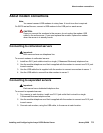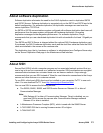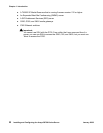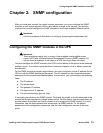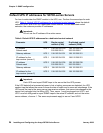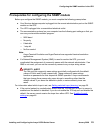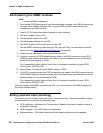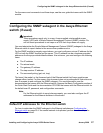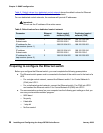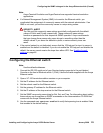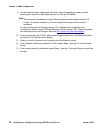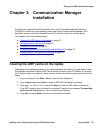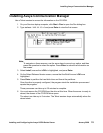
Configuring the SNMP subagent in the Avaya Ethernet switch (if used)
Installing and Configuring the Avaya S8700-Series Server January 2008
27
For the menus and commands to set these traps, see the user guide that comes with the SNMP
module.
Configuring the SNMP subagent in the Avaya Ethernet
switch (if used)
!
Important:
Important: These procedures apply only to a new, Avaya-supplied uninterruptible power
supply (UPS) with a Simple Network Management Protocol (SNMP) module. Do
not use these procedures to set traps on a UPS that Avaya does not supply.
You must administer the Simple Network Management Protocol (SNMP) subagent in the Avaya
Ethernet switch to report alarms to the server when problems occur.
For the SNMP module to properly report alarms, you must configure a unique IP address for the
UPS on both the SNMP module and the server. This IP address can be a customer-provided
address or the Avaya-provided default address. At a minimum, you must configure the following
items:
● The IP address
● The subnet mask
● The gateway IP address
● The trap receiver IP address
● The community string (get, set, trap)
The brand, the model, or the firmware load of the Ethernet switch that Avaya supplies can
change without notice. For this reason, this document does not provide specific instructions on
how to connect to and configure the SNMP subagent. For more information, see the
documentation that comes with the Ethernet switch. Also see the Basic Configuration section of
the Quick Start Guide and the documentation CD-ROM that comes with the Ethernet switch for
the default user ID, password, and configuration commands.
Note:
Note: For the Ethernet switch to report alarms properly, you must also configure the IP
addresses for the Ethernet switches in the servers.
Default IP addresses for the Ethernet switch
For how to administer the SNMP subagent in the Ethernet switches see Configuring the
Ethernet switch on page 29. If the control network is duplicated, perform the same steps for
both Ethernet switches.



